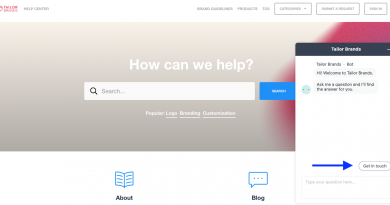Updating Your Blazor Server App to .NET 8
With the discharge of .NET 8, many Blazor builders will need to benefit from the brand new options and enhancements it brings. Updating a Blazor Server app to .NET 8 is pretty simple, however there are a couple of steps to observe to guarantee a clean transition.
In this weblog submit, we’ll stroll via the total technique of updating an present Blazor Server app to goal .NET 8 as a substitute of the earlier model. By the top, you will have your app operating on the most recent .NET launch and ready to leverage every little thing it has to supply.
Check Project and Package References
Before making any code adjustments, it is a good suggestion to examine your undertaking and package deal references to see how issues might have to be up to date. Open your Blazor Server app’s *.csproj file and pay attention to:
The TargetFramework worth – This ought to presently be one thing like net6.0. Make positive it’s up to date to net8.0 when you improve.
Any package deal references with model constraints pinned to earlier .NET variations. These will want stress-free to permit upgrading to newer package deal variations suitable with .NET 8.
You’ll additionally need to test the model numbers of any NuGet packages your undertaking straight references. Some could have breaking adjustments or require upgrading due to dependency adjustments launched with .NET 8.
Taking stock now makes updating references and dependencies a smoother course of in a while. It’s additionally an excellent alternative to clear up any unused or pointless packages earlier than upgrading.
Update to .NET 8 SDK
With undertaking context checked, it is time to set up the .NET 8 SDK if not already current. Open a command immediate and run:
dotnet instrument set up -g dotnet-sdk-8.0.xxx
Replace xxx with the particular .NET 8 SDK model you need, like 8.0.100-preview.7.22354.2. Once put in, replace your undertaking file to use .NET 8:
<TargetFramework>net8.0</TargetFramework>
This tells the SDK which model of .NET to goal for constructing and operating your app.
Update Packages
Now that your undertaking is configured for .NET 8, you possibly can replace any NuGet packages to their newest suitable variations. A very good first step is to restore packages:
dotnet restore
This will set up or replace any packages and dependencies to work with .NET 8. You may want to manually replace particular packages listed in your *.csproj if they’ve main model adjustments.
Core Blazor packages like Microsoft.AspNetCore.(*8*) and Microsoft.AspNetCore.(*8*).Web ought to replace routinely. But test the discharge notes of any third get together packages for particular improve directions.
Compile and Test
Now you are prepared to attempt constructing and operating your app on .NET 8. From the command line:
dotnet construct
dotnet run
This compiles and begins the dev server to run your Blazor Server app focused at .NET 8. Take a while to check all areas of the app – there could also be runtime errors or compiler warnings to handle from the improve.
Some issues to test embrace Razor parts rendering correctly, API calls working as anticipated, and any specialised options or plugins from third-party packages. Thorough testing at this level helps catch points early.
Fix Incompatibilities
While the core .NET replace course of goals to be non-breaking, chances are you’ll encounter runtime exceptions or compilation errors that want fixing:
- API adjustments in up to date NuGet packages
- Removed options now not supported in .NET 8
- Code utilizing out of date APIs or patterns
Take word of error messages and evaluate the .NET launch notes to perceive what could also be inflicting points. Common fixes embrace:
- Updating code to use alternative APIs if strategies have been deprecated
- Removing unused code now not crucial
- Upgrading third get together packages that rely on up to date .NET APIs
Addressing these compiler and runtime errors one after the other cleans up any remaining incompatibilities from the improve.
Also Read: What is the distinction Between .NET 7 and .NET 8?
Update Runtime Host
Blazor Server apps depend on the ASP.NET Core host to run the server-side app. You’ll want to guarantee your undertaking references are configured to use the most recent model suitable with .NET 8.
This usually includes updating packages like:
- Microsoft.AspNetCore.App
- Microsoft.AspNetCore.Hosting
- Microsoft.AspNetCore.Server.Kestrel
Once package deal references are aligned for .NET 8 runtime internet hosting, rebuilding and operating your undertaking ought to work with out points.
Finish and Deploy
After resolving all compilation errors and testing completely in your native machine, your Blazor Server app is prepared to be deployed focusing on .NET 8 in manufacturing.
Some ultimate checks:
- Commit up to date undertaking and package deal information to supply management
- Make positive app runs as anticipated when printed/deployed
- Monitor logs and telemetry for any runtime points post-deployment
- Consider re-architecting elements of the app to benefit from new .NET 8 APIs
And with that, your Blazor Server utility is now up-to-date and operating on the most recent .NET 8 platform launch! Be positive to frequently replace packages utilized in your undertaking as new variations come out as nicely.
The submit Updating Your Blazor Server App to .NET 8 appeared first on Datafloq.

